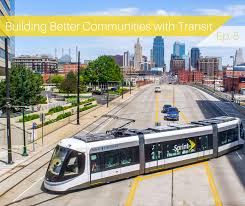Transit funding can sometimes be a challenge. Identifying appropriate grants and programs for specific projects is always a large undertaking and an important part of the planning process. Recently, we began working on a list of potential transit and transit access funding opportunities to share with our members, so they my better serve their communities, and Missouri as a whole. This particular list is targeted for programs that benefit disadvantaged areas.
Federal Transit Administration Programs –
- Federal Transit Administration: https://www.fhwa.dot.gov/livability/ or https://www.transit.dot.gov/regulations-and-guidance/environmental-programs/livable-sustainable-communities/livable-and
- A safe, reliable, integrated, and accessible transportation system supports communities, expands business opportunities, and improves people’s quality of life while also creating jobs. FTA programs offer different opportunities for funding transportation planning and projects that can assist your community’s development and stimulate America’s neighborhoods to become safer, healthier, and more environmentally sustainable. FTA provides stewardship of combined formula and discretionary programs totaling more than $10 billion to support a variety of locally planned, constructed, and operated public transportation systems throughout the United States. Public transportation systems typically include buses, subways, light rail, commuter rail, streetcars, monorail, passenger ferry boats, inclined railways, or people movers.
- The Job Access and Reverse Commute Program (JARC): https://www.transit.dot.gov/funding/grants/grant-programs/job-access-and-reverse-commute-program-5316
- JARC provides low‐income workers and students with transportation services to jobs, employment centers, and educational institutions. A recent study of the economic benefits of employment‐related transportation services concluded that transportation funded through the JARC program provided access to approximately 43.4 million jobs, including 21.2 million low‐wage jobs.
HUD Programs – Some Transit/Transportation Applicability
- HOPE VI: https://www.hud.gov/program_offices/public_indian_housing/programs/ph/hope6
- The Hope VI Program provides competitive funding for the elimination or reclamation of severely distressed public housing developments. Funds can be used for demolition, major rehabilitation, and new construction of public housing; acquisition of sites in other locations for private new construction and supportive services for those relocated by the program. The HOPE VI program promotes the creation of mixed‐income communities that are pedestrian‐ friendly, and transit‐accessible. It also encourages high standards of green building for new construction projects through regulation and the prioritization of proposals with green features.
- Community Development Block Grants (CDBG): https://www.hud.gov/program_offices/comm_planning/communitydevelopment/programs
- The CDBG Program provides formula funding directly to larger cities and counties and through state governments for small units of local government. Funds can be used for most kinds of development as long as it meets one of the following national objectives:
- 1) benefits low‐ and moderate‐income persons;
- 2) aids in the prevention or elimination of slum and blight; or
- 3) meets certain community development needs having a particular urgency.
- CDBG is a flexible program that provides resources to address a wide range of community and economic development needs, including decent housing, a suitable living environment, and expanded economic opportunity.
- The CDBG Program provides formula funding directly to larger cities and counties and through state governments for small units of local government. Funds can be used for most kinds of development as long as it meets one of the following national objectives:
EPA Programs – Some Transit/Transportation Applicability
- Environmental Justice Small Grants Program: https://www.epa.gov/environmentaljustice/environmental-justice-small-grants-program
- This program provides financial assistance to eligible organizations to build collaborative partnerships, to identify the local environmental and/or public health issues, and to envision solutions and empower the community through education, training, and outreach.
- Environmental Justice Collaborative Problem‐Solving Cooperative Agreement Program: https://www.epa.gov/environmental-justice/environmental-justice-collaborative-problem-solving-cooperative-agreement-0
- This program provides financial assistance to eligible organizations working on or planning to work on projects to address local environ‐ mental and/or public health issues in their communities, using EPA’s “Environmental Justice Collaborative Problem‐ Solving Model.
- State Environmental Justice Cooperative Agreements Program: https://www.epa.gov/environmentaljustice/state-environmental-justice-cooperative-agreements-fact-sheet
- This program provides funding so that eligible entities may work collaboratively with affected communities to understand, promote, and integrate approaches to provide meaningful and measurable improvements to the public health and/or environment in the communities.
- Environmental Justice Showcase Communities Project: https://www.epa.gov/environmentaljustice/environmental-justice-showcase-communities-region
- This project provides EPA regional office funding to bring together governmental and non‐governmental organizations to pool their resources and expertise on the best ways to achieve real results in communities. The successes and lessons learned in these demonstration projects will be used to help guide the design and implementation of future environmental justice projects and will help EPA increase its ability to address local environmental challenges in more effective, efficient, and sustainable ways. http://www.epa.gov/environmentaljustice/grants/ej‐showcase.html
Additional Resources:
- Connecting HUD Title VI and EPA Environmental Justice: https://www.epa.gov/environmentaljustice/title-vi-and-environmental-justice
- This page contains a current list of funding and technical assistance opportunities by Department of federal programs offering Promise Zone preferences as of July 7, 2016. – https://www.hudexchange.info/onecpd/assets/File/Promise-Zones-2016-Federal-Resources.xlsx
- House Ups Bus And Bus Facilities Program In The FY 19 THUD Appropriations Bill. – The FY19 increase is over $550 million for buses.
Here is a breakdown of bus funds that will be increased over the FAST Act funding levels already authorized:
| FTA Bus Program | FY19 Plus Up | Total FY19 |
| Bus and Bus Facility Discretionary Grant Program (5339b) | $300 million | $572.1 million |
| Urbanized Formula Program (5307) | $150 million | $4.977 billion |
| Rural Formula Grant Program (5311) | $50 million | $709.3 million |
| Low/No Emissions Competitive Grant Program (5339c) | $50 million | $100 million |
| Total | $550 million |
Continued work includes maintaining these funding levels through the House amendment process. Also needed, is the Senate to match these funding increases in their version of THUD.
Are you planning on applying to any of these programs for your upcoming projects? Send us a message and let us know at mbox@mopublictransit.org!
